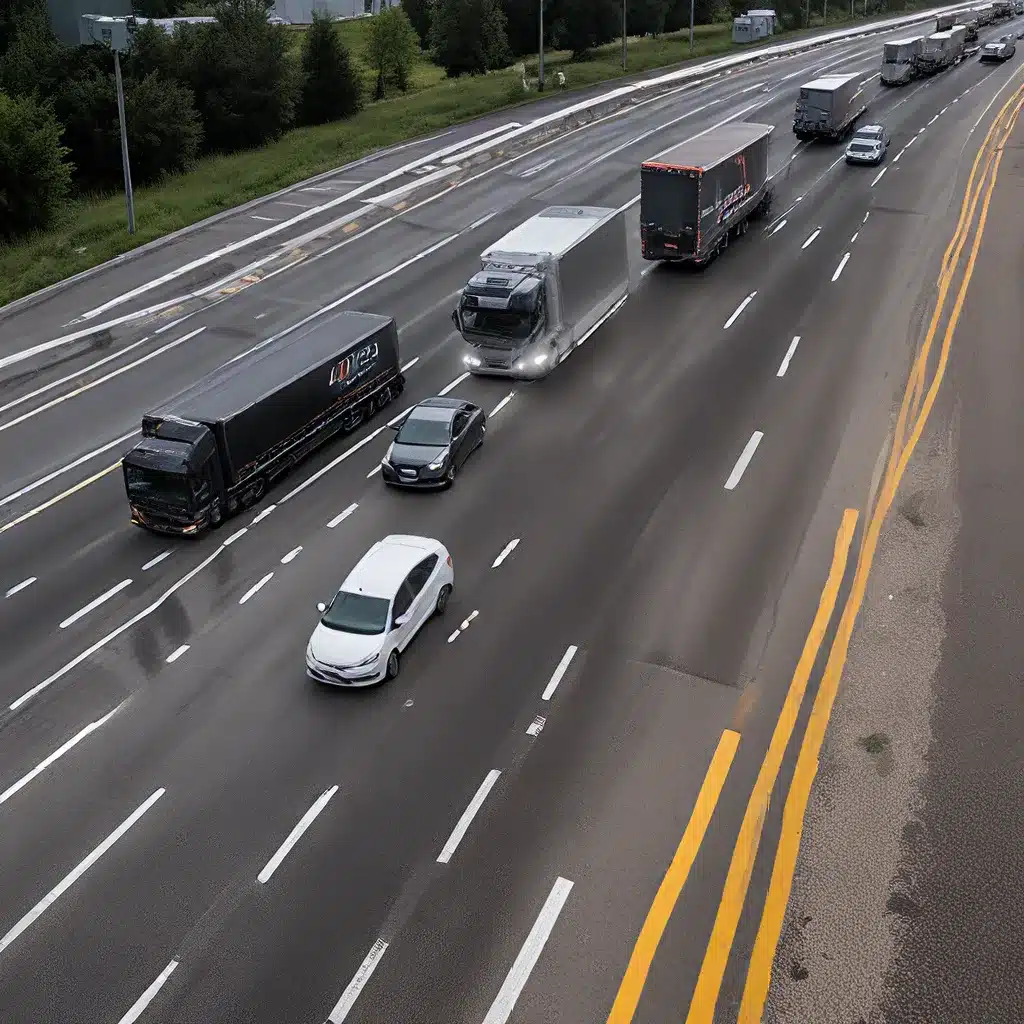
The Era of Sensor-Driven Fleet Management
In today’s rapidly evolving transportation landscape, sensor networks and the Internet of Things (IoT) are revolutionizing the way fleets are managed and optimized. By integrating a diverse array of sensors, fleet operators can now harness a wealth of real-time data to make informed decisions, enhance operational efficiency, and ensure the safety of their vehicles and drivers.
One of the key advancements in this field is the concept of sensor fusion, where data from multiple sensors is combined to generate a more comprehensive understanding of the fleet’s performance and environmental conditions. This holistic approach enables fleet managers to make more accurate predictions, anticipate potential issues, and proactively address challenges before they escalate.
Sensor-networks.org explores the transformative impact of sensor fusion on fleet management, highlighting how this technology can empower businesses to streamline operations, reduce costs, and enhance the overall driving experience.
Unlocking the Power of Sensor Fusion
At the heart of sensor fusion lies the integration of multiple sensor modalities, each providing a unique perspective on the fleet’s operations. From GPS and accelerometers to fuel sensors and camera systems, the convergence of these data streams paints a detailed picture of the fleet’s performance, allowing for informed decision-making.
One of the primary benefits of sensor fusion is its ability to enhance route planning and optimization. By combining real-time traffic data, weather conditions, and vehicle telemetry, fleet managers can generate the most efficient routes, reducing travel times, fuel consumption, and environmental impact. This not only improves the overall fuel efficiency of the fleet but also contributes to reduced carbon emissions and a more sustainable transportation ecosystem.
Moreover, sensor fusion can play a crucial role in enhancing safety for fleet operations. By monitoring driver behavior, analyzing road conditions, and detecting potential hazards, fleet managers can proactively address safety concerns and implement targeted training or interventions to mitigate risks. This holistic approach to safety can lead to a reduction in accidents, lower insurance premiums, and improved driver morale.
Leveraging Sensor Data for Intelligent Decision-Making
The wealth of data generated by sensor networks in a fleet management system is a valuable asset that can be harnessed to drive business optimization. By integrating advanced analytics and AI-powered algorithms, fleet managers can uncover valuable insights that were previously hidden.
For example, predictive maintenance models can leverage sensor data to anticipate equipment failures or maintenance needs, allowing for proactive interventions and minimizing downtime. This not only enhances the reliability of the fleet but also reduces the overall maintenance costs and extends the lifespan of vehicles.
Similarly, sensor-driven performance analysis can identify areas for improvement in driver behavior, route planning, and asset utilization. By understanding the key performance indicators (KPIs) that matter most, fleet managers can make data-driven decisions to optimize the entire operation, leading to improved productivity and cost savings.
Addressing the Challenges of Sensor Network Implementation
While the potential of sensor fusion in fleet management is immense, the implementation of such a system is not without its challenges. Ensuring data security, managing sensor network connectivity, and optimizing energy consumption are crucial considerations that must be addressed.
Data security is a paramount concern in the age of IoT, as sensor networks can be vulnerable to cyber threats. Robust encryption protocols, access control mechanisms, and secure data storage practices are essential to protect sensitive fleet information and maintain regulatory compliance.
Equally important is the seamless connectivity of the sensor network, ensuring that real-time data is continuously transmitted and processed. Redundant communication pathways, mesh network topologies, and edge computing strategies can help mitigate the impact of connectivity disruptions and ensure the reliability of the sensor system.
Furthermore, the energy management of sensor nodes is a critical consideration, as fleet vehicles operate in diverse environments and cannot rely on a constant power source. Energy-efficient sensor designs, battery optimization, and renewable energy integration can help extend the operational lifespan of the sensor network and reduce the overall environmental impact.
Empowering Fleets with Sensor Fusion: Case Studies and Best Practices
The transformative potential of sensor fusion in fleet management has already been demonstrated in various industries. Let’s explore a few real-world case studies and uncover the best practices that have enabled businesses to thrive in this sensor-driven landscape.
Fleeto, a leading provider of fleet management solutions, has implemented a comprehensive sensor fusion platform for LPG delivery fleets. By integrating GPS, fuel consumption sensors, and driver behavior monitoring, Fleeto has helped its clients achieve significant operational improvements. These include optimized route planning, reduced fuel waste, and enhanced driver safety, leading to cost savings and improved customer satisfaction.
In another case study, Layrz, an IoT solutions provider, collaborated with Airtable to revolutionize asset and information management for businesses. By combining advanced monitoring and analysis features with Airtable’s data organization capabilities, the integrated solution has empowered organizations to streamline their operations, improve productivity, and enhance decision-making.
These examples highlight the importance of adopting a holistic approach to fleet management, where sensor fusion serves as the foundation for data-driven optimization. Key best practices include selecting the right sensor mix, implementing robust data management strategies, and fostering a culture of continuous improvement within the organization.
The Future of Sensor-Driven Fleet Management
As the technological landscape continues to evolve, the role of sensor fusion in fleet management is poised to become even more prominent. Advancements in edge computing, 5G connectivity, and machine learning will further enhance the capabilities of sensor networks, enabling real-time, autonomous decision-making and predictive analytics.
Furthermore, the integration of emerging technologies such as autonomous vehicles and drone-based delivery systems will redefine the very nature of fleet management. Sensor fusion will play a crucial role in coordinating these complex, interconnected systems, ensuring seamless operations, enhanced safety, and unparalleled efficiency.
The future of fleet management is sensor-driven, data-centric, and proactively optimized. By embracing the power of sensor fusion, fleet operators can stay ahead of the curve, capitalize on technological advancements, and transform their operations into a sustainable, competitive advantage.